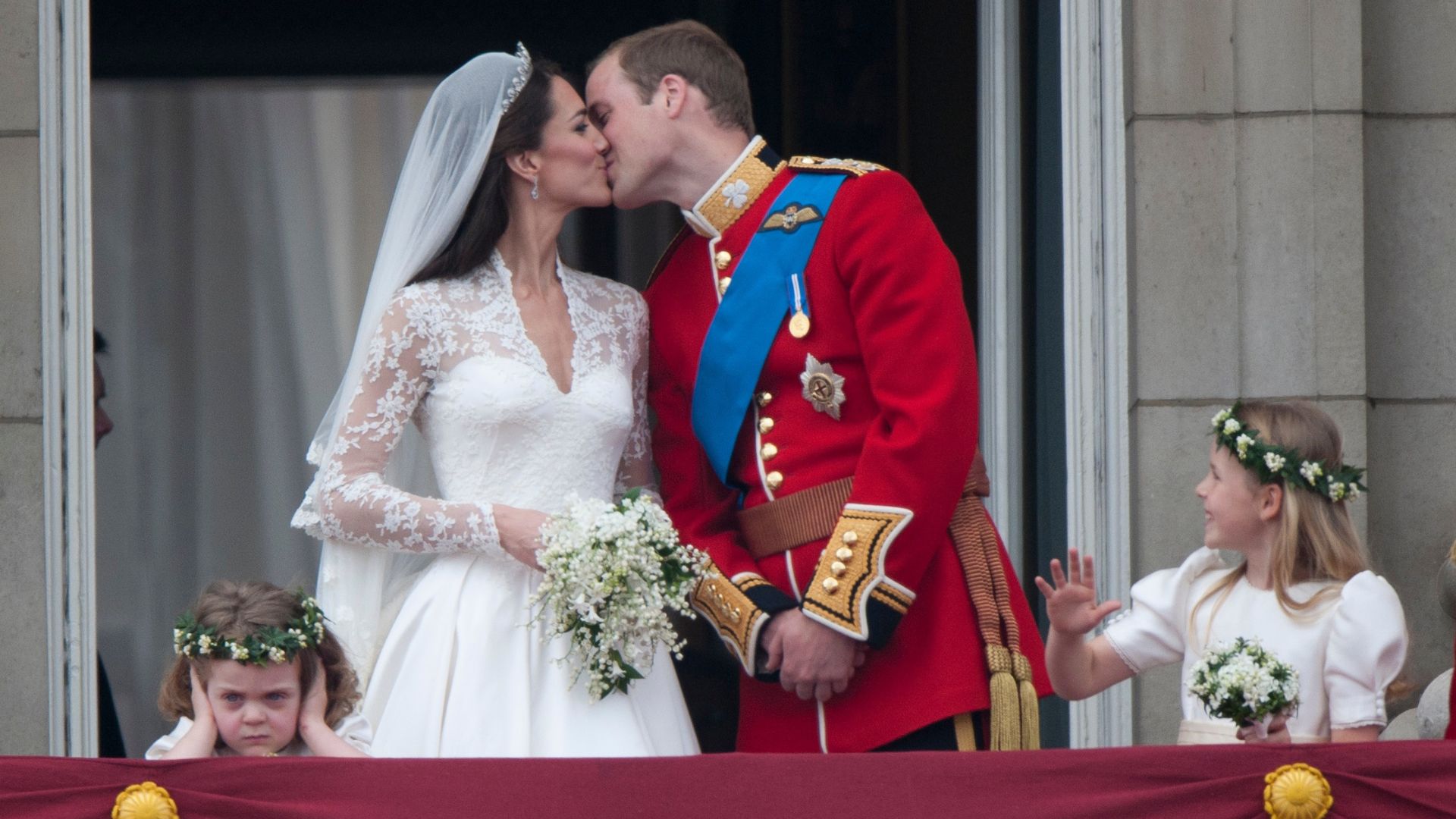Kate Middleton nearly ditched her wedding day tiara in favor of a more whimsical headpiece
The Princess of Wales wanted a headpiece inspired by her mother's wedding style


Kate Middleton almost didn't wear a tiara for her 2011 wedding to Prince William and originally wanted a headpiece inspired by her mother Carole Middleton's wedding style.
- Kate Middleton stunned in a sparkling Cartier tiara on her wedding day back in 2011, but she originally wanted to wear a very different headpiece.
- Kate's first choice of hair accessory was a whimsical flower crown inspired by her mother's own wedding day hairstyle.
- In other Royal News, Carole Middleton's gray floral dress features the most elegant neckline and it's perfect for summer.
While she has only recently been bestowed with the title of Princess of Wales, Kate Middleton looked every bit the royal princess on her 2011 wedding day. Walking down the aisle in a stunning white gown designed by Sarah Burton at Alexander McQueen, the bride accessorized effortlessly with the Queen's own iconic Cartier Halo tiara which she borrowed for the special day.
Now, as the Wales' gear up to celebrate their 12th wedding anniversary, it has been revealed that Kate nearly ditched the sparkling Cartier headpiece and instead originally wanted to accessorize with something much more whimsical and on-trend.
Despite the style not typically being royally approved, Kate expressed her desire to wear a flower crown on her wedding day, a look inspired by her mum, Carole Middleton.

The then 29-year-old Kate wanted to don a simple crown made of flowers instead of the Cartier Halo tiara, or any tiara for that matter, to reference her mother's own wedding day style.
When Kate's parents, Carole and Michael Middleton, said 'I do' in 1980, Carole wore flowers in her hair to walk down the aisle, a very popular bridal hairstyle in the 80s. The look has since made its comeback, with floral headpieces now being a go-to accessory for many big events such as weddings, music festivals, and even birthday parties.
While it is tradition for royals to wear tiaras from the family vault as they make their vows, Kate had reportedly hoped she could be an exception and bring a part of her own family history to the day. Her wishes weren't misplaced, the style, while not usually a favorite of the Royal Family, has been worn by some of its members before as they made their vows. Princess Anne, for example, wore a simple sprig of heather in her hair when she married Timothy Laurence in 1992.
Sign up to our free daily email for the latest royal and entertainment news, interesting opinion, expert advice on styling and beauty trends, and no-nonsense guides to the health and wellness questions you want answered.

However, Kate ultimately changed her mind about her wedding accessories. She walked down the aisle sporting the stunning Cartier Halo tiara which boasts a whopping 739 brilliant-cut diamonds as well as 149 baguette diamonds.
The tiara was borrowed from the late Queen, who inherited the piece from the Queen Mother. It was originally created in 1936 and became a favourite for royals after it was bought by Queen Elizabeth II's father, George VI, as a gift for the Queen Mother.
But while Kate did not end up wearing a flower crown, she did manage to incorporate her desired trend into her wedding and all the young bridesmaids proudly wore adorable flower crowns with white petal details.
Kate allegedly had a haul of tiaras to choose from and it's long been reported that, thanks to her close bond with the Queen and also with the late sovereign's personal dresser, Angela Kelly, Kate has always had access to whatever royal jewels take her fancy.
A source previously told Grazia, "Kate gets the pick of the jewels for big occasions and the Queen is happy to open up her jewellery box. Kate has been clever to befriend Angela Kelly, who is in charge of the Queen’s personal jewellery collection and oversees the loans."
"Generally, Kate is allowed to borrow whatever she fancies."

Charlie Elizabeth Culverhouse is a freelance royal news, entertainment and fashion writer. She began her journalism career after graduating from Nottingham Trent University with an MA in Magazine Journalism, receiving an NCTJ diploma, and earning a First Class BA (Hons) in Journalism at the British and Irish Modern Music Institute. She has also worked with Good To, BBC Good Food, The Independent, The Big Issue and The Metro.